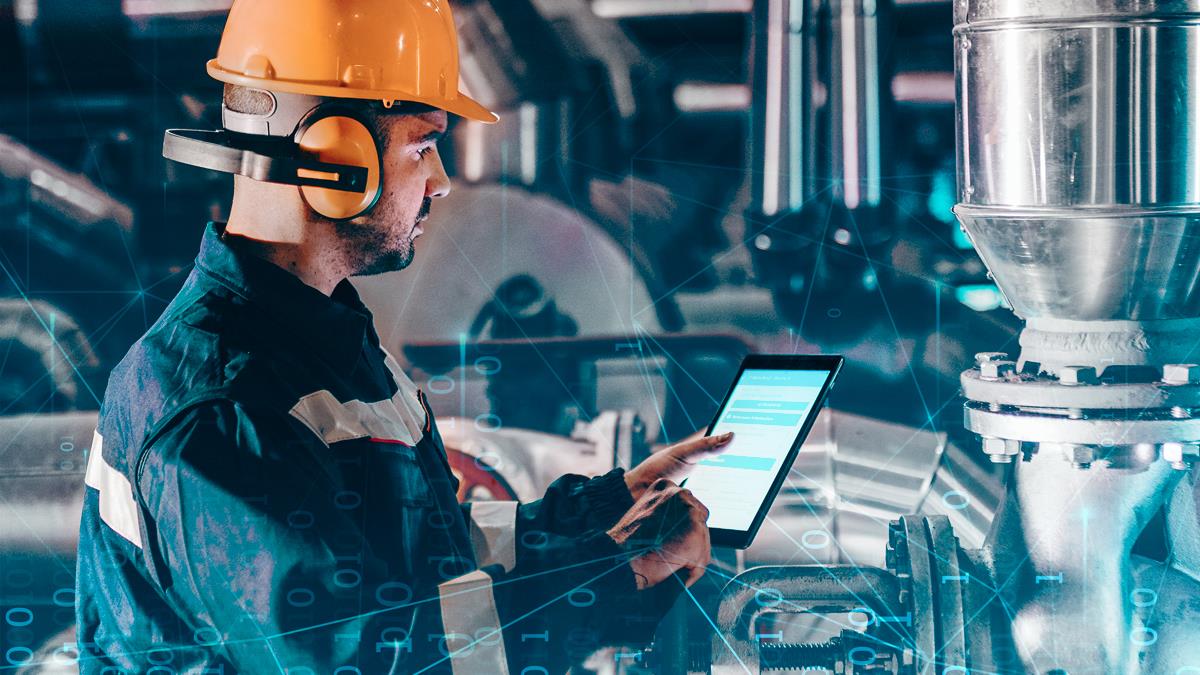
It's difficult to open an industry publication and not read about the Industrial Internet of Things (IIoT), advanced analytics and connected workers. Although this technology and its potential are exciting, many companies don't have the resources for a complete digital transformation and will be using legacy equipment for years to come.
However, digitalization and connected workers don’t need to be an all-or-nothing discussion. The available technology allows companies to make minor investments while achieving tangible benefits. In this article, we'll look at ways businesses can enhance critical lubrication practices using connected workers and IIoT to increase asset longevity, reduce breakdowns and improve safety.
#1: Monitoring lubrication quality
Organizations can start small with connected technology, implementing wireless networks and selecting IIoT sensors to monitor only their most critical equipment in near-real time. Seek applications requiring minimal investment, with easy implementation but strong financial returns.
Many companies offer ruggedized, miniaturized, commercial-off-the-shelf (COTS) sensors to monitor fluid levels, flow, and pressure differential. The collected data provides several benefits. Service teams can ensure that lubricant quantities are sufficient for continued equipment operation without physical inspection, and maintenance teams can monitor trends that might indicate poorly seated pressure relief valves, clogged filters or pumps in bypass. The information gathered also becomes part of the in-service record, evidencing correct lubrication practices in the event of warranty claims for equipment malfunction.
Ultrasonic sensors can be installed to warn of increased friction in rolling elements, allowing plants to schedule lubrication or maintenance intervention proactively. Ensuring optimum bearing operation reduces wear, increases asset life, and reduces energy use, all of which improve equipment availability and lower operating costs.
Connected desiccant breathers can point to the precise time a breather requires changing, ensuring you don't replace a breather too soon, which costs money, or too late, affecting lubricant quality. With many breathers in remote or difficult locations on operating equipment, connected breathers also decrease the risk of injury to technicians.
More recently, sensors are becoming available to monitor fluid cleanliness using lasers, pressure differential or image-processing technologies. While these sensors do not yet rival laboratory analysis, their data complements an oil analysis program by helping initiate timely inspections, filtration tasks or water removal processes.
#2: Analyzing lubricants condition
Laboratory lubricant analysis is the gold standard for understanding the condition of lubricants and the assets they protect. Yet, such analysis takes time, is expensive and the collection process can introduce contaminants. Also, it doesn't guarantee that the sample represents the entire fluid body.
Technology has advanced sufficiently to enable real-time oil analysis using in-line sensors. While still new and requiring further testing, miniature sensors use techniques including capacitance, magnetic flux and infrared and X-ray spectroscopy to measure contamination and fluid degradation in real time, warning of imminent failure or triggering maintenance tasks and operational adjustments.
Having analyzed the lubricant, data analysis is the next step. With such an abundance of data, and as an organization's connected worker strategy becomes more sophisticated or widespread, it can use the collected data from sensors for more than operational tweaks and maintenance tasking.
Cloud-based data, analysis, and presentation can inform tactical decision-making through real-time dashboards and KPI monitoring. Making such information widely available improves communication and knowledge transfer throughout a company because everyone can view the same information.
The information about the effectiveness of maintenance strategies, the outcome of lubrication trials, increased energy use and the impact of changes in servicing regimes is available to inform connected personnel, enforce accountability, and initiate actions. The data access is device-agnostic, meaning in-factory, remote or international personnel can access information wherever they use their mobile devices.
#3: Streamlining maintenance intervention
Knowledge and analysis are fine, but they are nothing if they don't ultimately result in data-driven decision-making and proactive intervention. A connected workplace using IIoT, machine learning (ML), and AI ensures a layered approach to maintenance interventions.
In its most basic form, connected worker technology can flag assets that diverge from an acceptable range of operating characteristics. These alerts or advisories can take many forms, from audio or visual warnings to emails or texts. Contextually relevant, they can target workers best qualified to address the issue or those currently on shift.
Automated responses can also initiate an intervention. If an ultrasonic sensor registers increased friction in a bearing, it could activate a single-point lubricator to deliver a calibrated measure of lubricant to provide optimal bearing lubrication, returning the ultrasonic signals to pre-alert levels. Such automation removes the need for human intervention, addresses the issue promptly, and avoids over or under-lubrication that is wasteful or damaging.
A sophisticated connected platform implementation uses augmented reality (AR) technology to assist service or maintenance technicians during a maintenance intervention. Smart glasses, tablets, mobiles or headsets guide workers to the component requiring attention, using data overlapping the image of the object. Current operating parameters can stream in near-real time, with checklists, maintenance data, and task information available for selection.
Parting thoughts
Companies don’t need to commit to extensive digitalization investment to access the benefits of connected worker technology. Starting small and investing in sensing and monitoring for lubrication tasks on critical equipment provides an immediate benefit, with a considered implementation resulting in excellent returns on investment from increased asset life and equipment reliability.
As the technology proves its value, organizations can incrementally develop enhanced management strategies and automated equipment lubrication practices. Connected technology places equipment performance, lubrication information, manufacturer data, and potential solutions into the hands of frontline workers, empowering them to take timely action.
Maintenance technology is advancing at a breathtaking pace. Connected worker technology offers organizations of all sizes a real opportunity to minimize capital spend and operating costs while improving equipment availability, safety, and asset longevity.


.jpeg)

